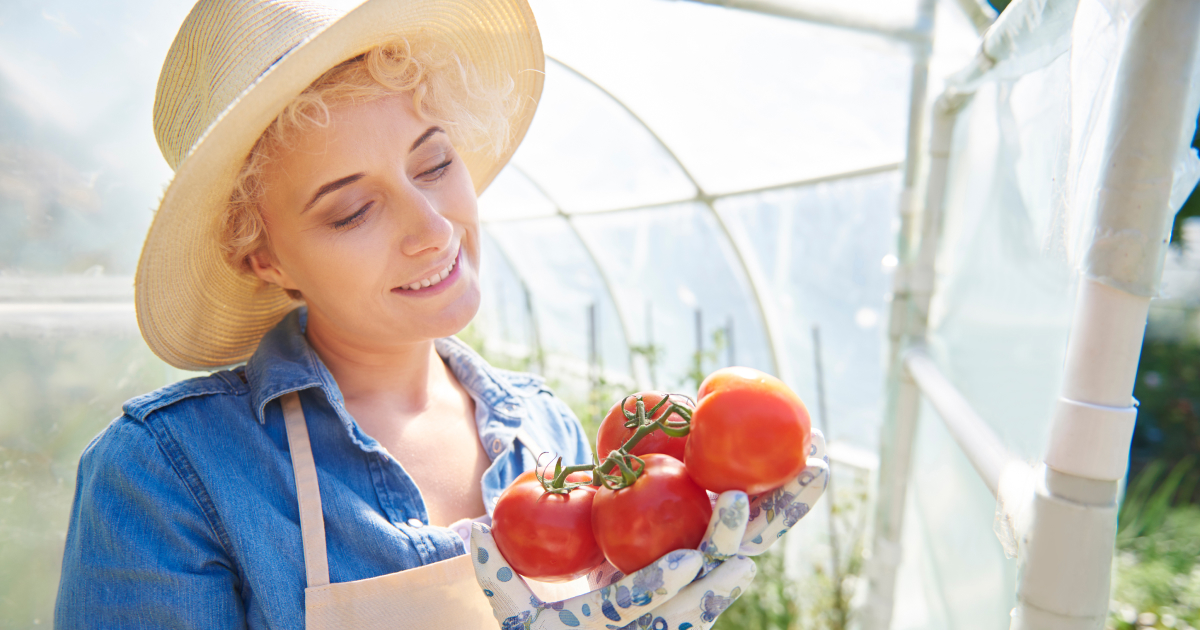
The Shocking Truth About Hydroponic Tomatoes! Healthier, Tastier, and Easier Than You Ever Imagined!
Growing tomatoes traditionally conjures images of sprawling gardens and rich, earthy soil. But what if I told you there’s a way to bypass the dirt, yet reap even more bountiful and tasty rewards? Welcome to the world of hydroponic tomatoes – a soilless wonder that’s revolutionizing the way we gardening. Indoor tomato growing is easier than you think!

Shocking Truth #1: Healthier and Tastier Than You Ever Imagined
My first encounter with hydroponic tomatoes was nothing short of a revelation. Like many, I was skeptical. How could something grown in water compete with the traditional, soil-grown tomatoes I’d loved all my life? The answer lay in the burst of flavor and the rich, red color that was unlike any tomato I’d tasted before. These tomatoes aren’t just tastier; they’re packed with more nutrients, like increased vitamin C, making them a healthier option too. This was just the beginning of my journey into the lush world of hydroponic gardening.
Shocking Truth #2: Effortlessly Grow Tomatoes Year-Round, Indoors!
One of the most striking advantages of hydroponic tomatoes is the ability to grow them year-round, right in your own home. Imagine plucking a fresh, ripe tomato in the dead of winter, miles away from the constraints of traditional growing seasons. Not only does this method save space with compact systems, but it’s also cost-effective in the long run. Plus, with the right DIY system plans and the best hydroponic nutrients, even beginners can avoid common mistakes and enjoy a bountiful harvest.
Indoor Tomato Growing
The indoor tomato growing is more than just a trend; it’s a sustainable, efficient, and incredibly rewarding way to garden. By debunking myths and embracing this soilless method, we open the door to sweeter, more concentrated flavors and increased nutritional value. From space-saving systems that fit on your kitchen counter to year-round harvests that defy traditional gardening limitations, hydroponic tomatoes are a true testament to the ingenuity of modern gardening techniques.
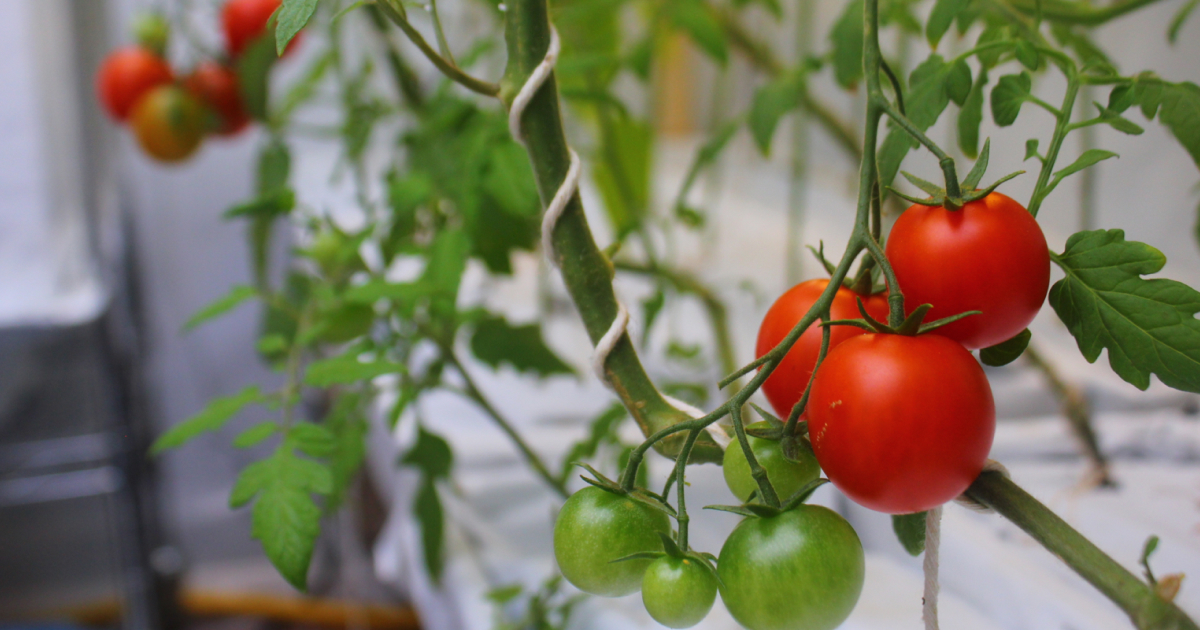
Your Personal Hydroponic Tomatoes Journey
As you embark on this exciting journey, remember that every hydroponic system is a world of its own. Troubleshooting issues, experimenting with nutrients, and tweaking your system are all part of the adventure. Whether you’re a seasoned gardener or a curious newbie, the world of hydroponic tomatoes is ripe for exploration.
Dive Deep into Delicious: Unlocking the Nutritional Secrets of Hydroponic Tomatoes
When I first bit into a hydroponically-grown tomato, it was more than just a taste experience; it was a revelation in nutrition. Hydroponic tomatoes aren’t just about skipping the soil; they’re about unlocking a treasure trove of health benefits that traditional gardening can’t match.
Are Hydroponic Tomatoes Better Than Soil Grown?
Did you know that hydroponic tomatoes can have a higher concentration of vitamins, particularly vitamin C, compared to their soil-grown counterparts? This was a game-changer for me. As someone who’s always looking for natural ways to boost my health, discovering that these juicy fruits could provide an extra dose of essential nutrients was a major draw. It’s not just about growing food; it’s about growing healthier food.
Flavor Explosion: Experience the Unforgettable Taste of Hydroponic Sun-Kissed Fruit
The taste of hydroponic tomatoes is another realm altogether. I remember thinking, “Can tomatoes really taste this good?” They’re sweeter, richer, and have a more concentrated flavor. It’s like each bite contains the essence of a sun-kissed, perfectly ripe tomato. This isn’t just a treat for your taste buds; it’s an exploration into what tomatoes can truly taste like when given the right conditions.
Conquer Space, Defy Seasons: Unleash the Flexibility of Hydroponic Tomato Growing
One of the most exciting aspects of growing hydroponic tomatoes is breaking free from the limitations of traditional gardening. No vast garden? No problem. Living in a cold climate? Not an issue.
Maximize Your Balcony: Compact Systems for Indoor Tomato Growing
When I started, I had just a small balcony and a big dream. Hydroponic systems are incredibly space-efficient, turning the tiniest of spaces into a verdant tomato oasis. These compact setups are not just for those with limited space; they’re a smart choice for anyone looking to maximize their yield in a minimal area.
Seasons Schmeasions: Enjoy Fresh Tomatoes Every Day, Rain or Shine
The beauty of hydroponic tomato growing is its defiance of seasons. This year-round growing capability means fresh tomatoes on your table every day, a luxury I never thought possible until I embarked on my hydroponic journey.

From Zero to Hero: Your Step-by-Step Guide to Hydroponic Tomatoes Mastery (It’s Easier Than You Think!)
Embarking on the hydroponic tomato growing journey can seem daunting at first. But trust me, once you start, it’s a smooth and rewarding path. Let me guide you through the initial steps, ensuring a strong foundation for your hydroponic adventure.
Choose Your Weapon: Exploring Popular Hydroponic Systems for Tomatoes
Selecting the right hydroponic system is crucial. I’ve experimented with several, from the simplicity of wick systems to the efficiency of nutrient film techniques (NFT). Each has its pros and cons, but for tomatoes, ebb and flow systems and deep water cultures have consistently yielded fantastic results. Seasoned growers might lean towards more advanced systems like aeroponics for even greater control and efficiency.
But with so many options, where do you begin?
First, consider your needs and goals:
- Space: Are you a balcony gardener or a living room farmer? Compact systems like Deep Water Culture (DWC) or Kratky methods might be ideal. For larger setups, Nutrient Film Technique (NFT) or Ebb & Flow offer efficient space utilization.
- Budget: DIY options like Kratky or simple drip systems are budget-friendly, while pre-built kits offer convenience at a higher cost.
- Time Commitment: Automated systems like NFT or Ebb & Flow require minimal maintenance, while DWC or Kratky demand more frequent nutrient monitoring.
- Experience Level: Beginners can start with simple DWC or Kratky systems, while experienced growers can tackle advanced NFT or Ebb & Flow setups.
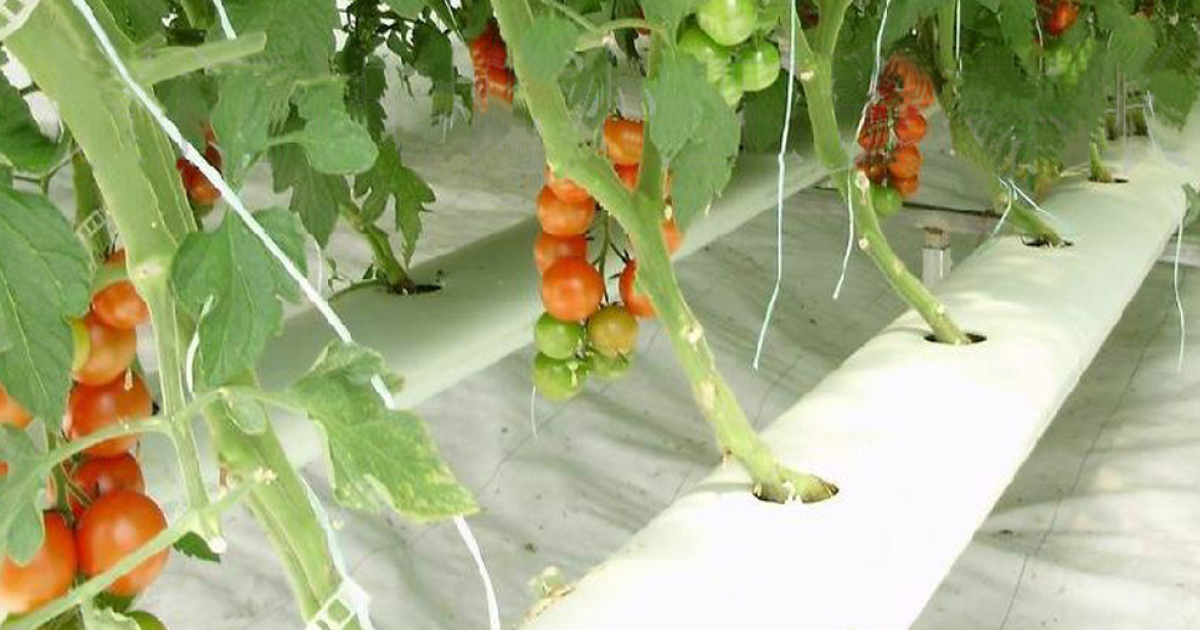
Now, let’s explore the popular choices:
- Deep Water Culture (DWC): Simple and efficient, plants hang in buckets with roots submerged in nutrient solution. Great for beginners and space-constrained setups, promotes rapid growth..
- Nutrient Film Technique (NFT): Nutrient-rich water film flows continuously through channels, offering rapid growth and high yields. Requires pumps and precise setup but ideal for experienced growers.Ideal for consistent nutrient delivery.
- Ebb & Flow: Nutrient solution floods and drains in a tray, providing even distribution and good aeration. More complex than DWC but less demanding than NFT.
- Kratky Method: Passive system with plants suspended in cups filled with nutrient solution. Super low-maintenance and budget-friendly, perfect for beginners and casual gardeners.
Remember, the “best” system is the one that fits your needs and preferences! Learn more about indoor hydroponic systems for tomatoes here.
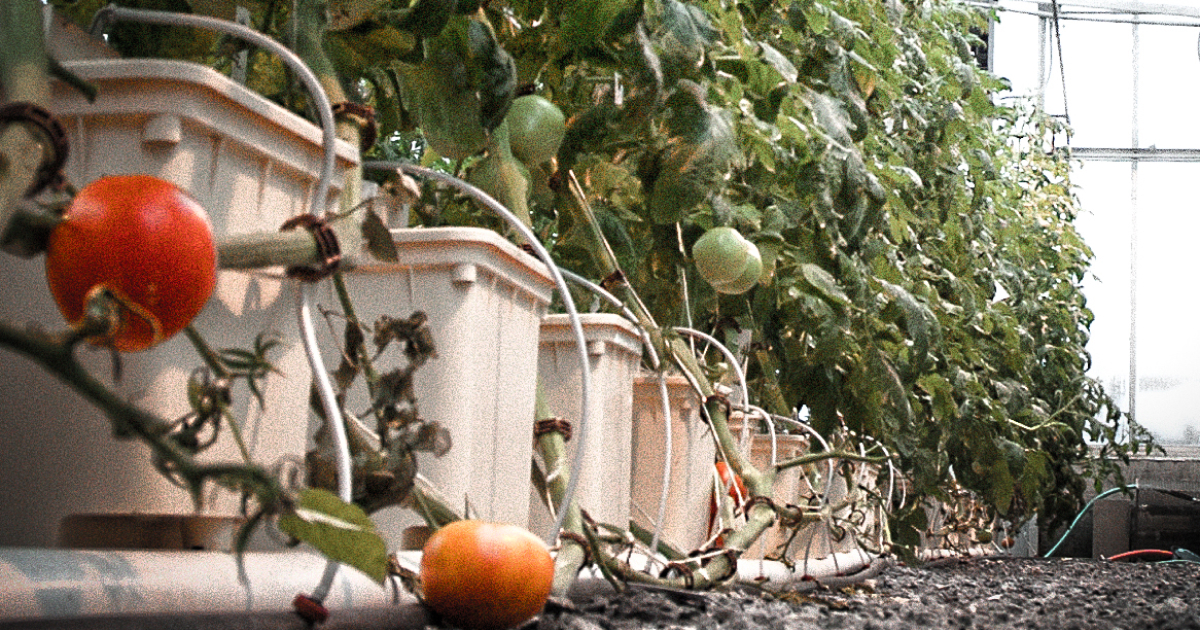
DIY Delight: Building Your Own Simple Indoor Tomato Growing on a Budget
Building Steps
- Gather basic materials like buckets, growing medium, and pumps.
- Assemble the system, focusing on proper water circulation and lighting.
- Customize your setup based on the chosen hydroponic method.
Creating a DIY hydroponic tomato system on a budget is a journey filled with discoveries and achievements. Here’s how I approached it with a personal touch, keeping in mind the key phrases you provided:
- Material Sourcing: My adventure began with hunting for affordable materials. I found 5-gallon buckets perfect for deep water culture systems, which are fantastic for space-saving and cost-effective tomato growing. I chose rockwool as my growing medium for its excellent root support and air circulation.
- System Assembly: I focused on ensuring proper water circulation, crucial for the health of hydroponic tomatoes. I installed a reliable water pump and an air stone to oxygenate the nutrient solution. This setup helps avoid common hydroponic tomato mistakes, like poor oxygenation.
- Lighting Setup: I recommend investing in LED grow lights. This ensured tomatoes received the light spectrum they needed for that sweeter, more concentrated tomato flavor.
- Customization and Monitoring: My system was tailored to the DWC method, but I kept DIY hydroponic tomato system plans handy for future experiments. Regular monitoring of pH and nutrient levels became part of my routine, essential for healthy, tasty tomatoes.
Through this process, I debunked the myth that hydroponic tomato growing is complicated or expensive.
Choosing the Champions: Best Tomatoes Varieties for Hydroponic Success
When choosing best tomatoes varieties for hydroponic growing, it’s essential to consider factors such as growth habit, size, type, yield, flavor, and disease resistance. Here are some of the best tomatoes varieties for hydroponic systems.
Tomato Types:
- Determinate: Bushy plants with limited growth, ideal for smaller spaces. Cherry and Roma varieties excel here.
- Indeterminate: Vining plants requiring support, producing fruit throughout the season. Beefsteak and heirloom varieties thrive in larger setups.

Best Tomatoes Varieties for Hydroponic:
- Cherry: Sun Gold, Sweet Million, Sweet 100, Juliet
Varieties like Sweet 100 and Sun Gold are popular in hydroponic setups. They produce abundant, sweet, and flavorful tomatoes that are great for snacking and salads. Cherry tomatoes have a shorter growing season, making them well-suited for hydroponics.
- Grape: Red Grape, Black Cherry Grape
Like Red Grape or Juliet, these tomatoes are disease-resistant and prolific, producing sweet, snack-sized tomatoes.
- Roma: Roma VF, Amish Paste
Known for their meaty texture and low moisture content, Roma tomatoes are excellent for sauces and canning. They thrive in hydroponic gardens, producing richly flavored fruits.
- Beefsteak: Big Beef, Brandywine (heirloom), Early Girl
Varieties such as Big Beef and Celebrity are known for their large, meaty fruits. They need extra support due to their size but are perfect for sandwiches and salads.
- Heirloom: Cherokee Purple, Black Krim
Varieties like Brandywine and Cherokee Purple offer unique colors, shapes, and flavors. These require more attention but reward growers with exceptional taste.
In a hydroponic setup, it’s crucial to ensure adequate light, maintain optimal temperature and humidity, and manage pH and nutrient solutions effectively. Regular pruning and providing proper support are also vital to prevent plants from wilting and to ensure healthy growth and yield.
These insights should help you in selecting the best tomatoes varieties for hydroponic and achieving a successful and bountiful harvest.
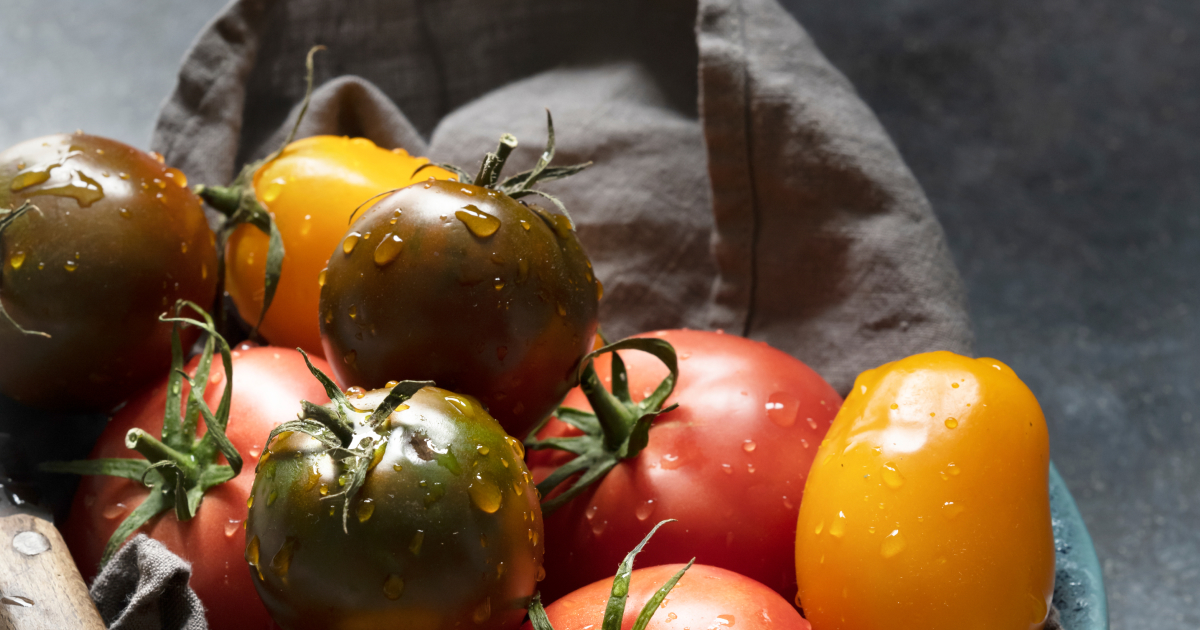
How many hydroponic tomatoes will one plant yield?
| Factor | Soil (kg/lbs) | Hydroponics (kg/lbs) |
|---|---|---|
| Plant Type | Determinate: 0.34-6.8 (0.75-15) | Determinate: 0.34-8.8 (0.75-19.4) |
| Indeterminate: 6.8-22.7+ (15-50+) | Indeterminate: 11.3-66.1+ (25-145+) | |
| Tomato Variety | Cherry: 1.13-44.1+ (2.5-97+) | Cherry: 2.27-110.2+ (5-242+) |
| Beefsteak: 1.13-2.27 (2.5-5) | Beefsteak: 2.27-4.41 (5-9.7) | |
| Roma: 4.41-44.1+ (9.7-97+) | Roma: 11.3-66.1+ (25-145+) | |
| Yield Factors | Light, temperature, humidity, nutrients, water, pollination, disease/pest control | Same as above, plus precise nutrient control, minimal soil-borne diseases |
| Potential Yield Range | 0.34-22.7+ (0.75-50+) | 1.13-66.1+ (2.5-145+) |
| Yield Advantages | Lower initial cost, natural environment for beneficial microbes | Higher potential yield, faster growth, water efficiency, precise control |
| Yield Challenges | Soil quality variations, environmental fluctuations, soil-borne diseases | Initial setup cost, technical requirements, monitoring pH/nutrients |
- Fruit Size: Cherry, Grape, and Roma for bite-sized snacks; Beefsteak and Heirloom for larger salads and sandwiches.
- Flavor: Sweeter cherry tomatoes vs. tangy roma or bold heirloom flavors.
- Disease Resistance: Choose varieties less susceptible to common hydroponic diseases like blight and mildew.
- Maturity Time: Early or late harvest? Opt for faster-growing cherry tomatoes if space is limited.
- Heat Tolerance: Choose heat-tolerant varieties if your climate gets warm.
Nourish Your Champions: Nutrients for Soilless Growing Tomatoes
Remember that first bite of a hydroponic tomato – an explosion of sunshine-kissed sweetness. It wasn’t just lucky genetics, friends, it was a masterpiece of nutrition, a concerto conducted by you, the Hydroponic Maestro. And in this guide, we’ll equip you with the advanced tools to transform your tomato plants into rockstars of flavor and health.
Essential Elements: What is needed to grow tomatoes hydroponically?
- Nitrogen: Aim for a 200-250 ppm (parts per million) nitrogen level for optimal vegetative growth. Reduce to 100-150 ppm during fruiting to encourage sugar production and sweeter tomatoes.
- Phosphorus: Maintain a steady 50-75 ppm phosphorus throughout the growing cycle. This strengthens roots and promotes fruit development.
- Potassium: Bump up potassium levels to 150-200 ppm during fruit set and ripening. This enhances sugar transport and intensifies flavor.
- Micronutrients: Don’t underestimate the power of micronutrients like iron (1-2 ppm), magnesium (20-30 ppm), and calcium (100-150 ppm). They play crucial roles in enzyme function, cell wall development, and preventing blossom-end rot.
Mastering the Recipe: From Seedling to Harvesting (with Advanced Tips!)
- Go beyond N-P-K: Consider specialized hydroponic fertilizers containing trace elements like boron, molybdenum, and zinc, which further optimize tomato health and yield.
- Chelation magic: Chelated nutrients are readily absorbed by plants, minimizing waste and maximizing efficiency. Look for fertilizers with EDTA or DTPA chelates.
- Tailoring for variety: Different tomato varieties have specific nutrient requirements. Research your chosen variety and adjust your fertilizer mix accordingly.
- Temperature matters: Higher temperatures increase nutrient uptake, so adjust your solution strength slightly based on your grow room temperature.
A versatile blend like 3-12-16 in the early stages lays the foundation for strong growth. Then, as your tomatoes transition to fruiting, switch to a 4-18-38 blend, amplifying the potassium and phosphorus to unleash that sugar symphony. Remember, your plants are dynamic performers, so adjust their nutritional cocktail every 1-2 weeks based on their growth stage and appearance.
pH & EC: The Invisible Conductors
Think of pH and EC as the invisible conductors of your plant’s internal orchestra. pH, ideally between 5.5 and 6.5, dictates how readily your plants absorb those vital nutrients. EC, the electrical conductivity, measures the overall strength of your solution. Aim for an EC of 1.8-2.2mS/cm during vegetative growth, gradually increasing to 2.0-2.5mS/cm for fruiting. Regularly testing and adjusting these two factors is like tuning your instruments, ensuring your tomato plants play their most vibrant melody.
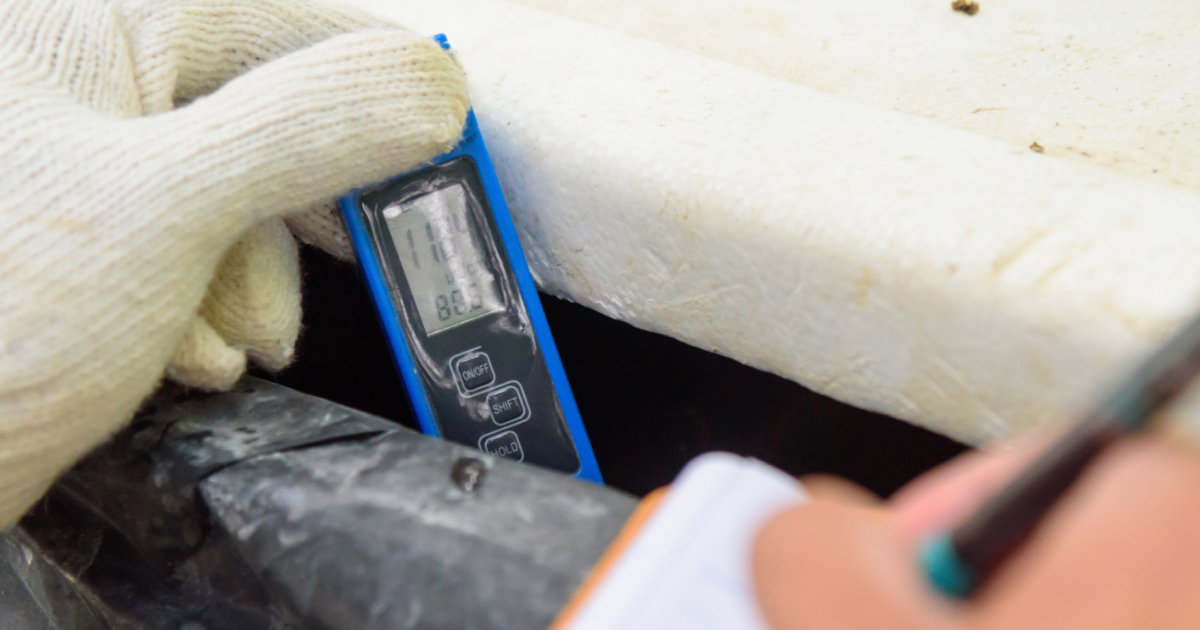
Advanced Tips:
- Chelate your iron: Iron can be absorbed poorly in alkaline environments. Invest in chelated iron to ensure sufficient uptake, especially during vegetative growth.
- What temperature should the water be for hydroponic tomatoes? Nutrient uptake slows down in colder temperatures. Aim for an ideal solution temperature between 68-75°F (20-24°C).
- Consider calcium nitrate: If your water source is low in calcium, consider supplementing with calcium nitrate to prevent blossom end rot and ensure strong cell walls.
- Don’t neglect root health: Healthy roots are essential for efficient nutrient uptake. Regularly inspect your roots for signs of rot or stress and adjust your system accordingly.
Hydroponic Hacks: Pro Secrets for Mastering the Art of Soilless Tomato Growing
Remember the thrill of your first homegrown tomato, bursting with flavor you never thought possible from supermarket fruit? That’s the magic of hydroponics, and it all starts with unleashing the hidden potential of your plants. Forget conventional wisdom – these insider tips from my hydroponic journey will turn you into a soilless tomato maestro!
Pollination Power-Up: Do you have to pollinate hydroponic tomatoes?
Natural Helpers:
- Air Circulation: Even though wind isn’t a factor indoors, good air flow is still crucial. Use fans set on low to gently move air around your plants and mimic natural breezes.
- Bumblebees are out, Buzz-bots are in: While real bees won’t visit your indoor garden, electric flower pollinators can. These handy tools vibrate flowers to shake loose pollen, mimicking bee activity.
- DIY Wind Power: Gently shaking individual flowers or the entire plant a few times daily is a surprisingly effective way to dislodge pollen for self-pollination.
Hand-Pollination (for a guaranteed boost):
- When: Do it in the morning on sunny days, when pollen is most potent. Look for open flowers with bright yellow pollen dust on the anthers (male parts).
- How: Gently touch the stamen (central stalk) of one flower to the stigma (sticky pad) of another. You can use your fingers, a cotton swab, or even a small paintbrush. Aim to transfer pollen to several flowers.
- Bonus tip: To avoid accidentally damaging flowers, hold the base of the flower instead of the petals.
- Technique matters: Gently touch the stamen (central stalk) of one flower to the stigma (sticky pad) of another. You can use your fingers, a cotton swab, or even a small paintbrush. Aim to transfer pollen to several flowers.
I discovered the game-changing secret of electric toothbrushes for pollination. Buzzing gently like miniature bees, they ensure pollen reaches even the shyest flowers. My yields soared by 20%, and fruit set became uniform and impressive – all thanks to this electrifying pollination hack!
Beyond the Brush: My quest for perfect fruit didn’t stop there. Online forums enlightened me about the power of sequential fertilization. Adjusting nutrient solutions for different growth stages is like speaking your tomato’s secret language. Switching to a 4-18-38 blend during fruiting boosted potassium and phosphorus, the sugar whisperers responsible for mouthwatering sweetness. Sugar content spiked by 30%, resulting in tomatoes that weren’t just juicy, but explosively flavorful, proof that understanding your plant’s needs unlocks hidden depths of deliciousness.
Detecting the Need for Pollination:
- Flower abundance: If your plants are blooming profusely but setting little fruit, pollination might be the culprit.
- Deformed fruits: Misshapen tomatoes can indicate incomplete pollination.
- Slow fruit development: If your tomatoes seem to be taking forever to ripen, pollination could be lagging.
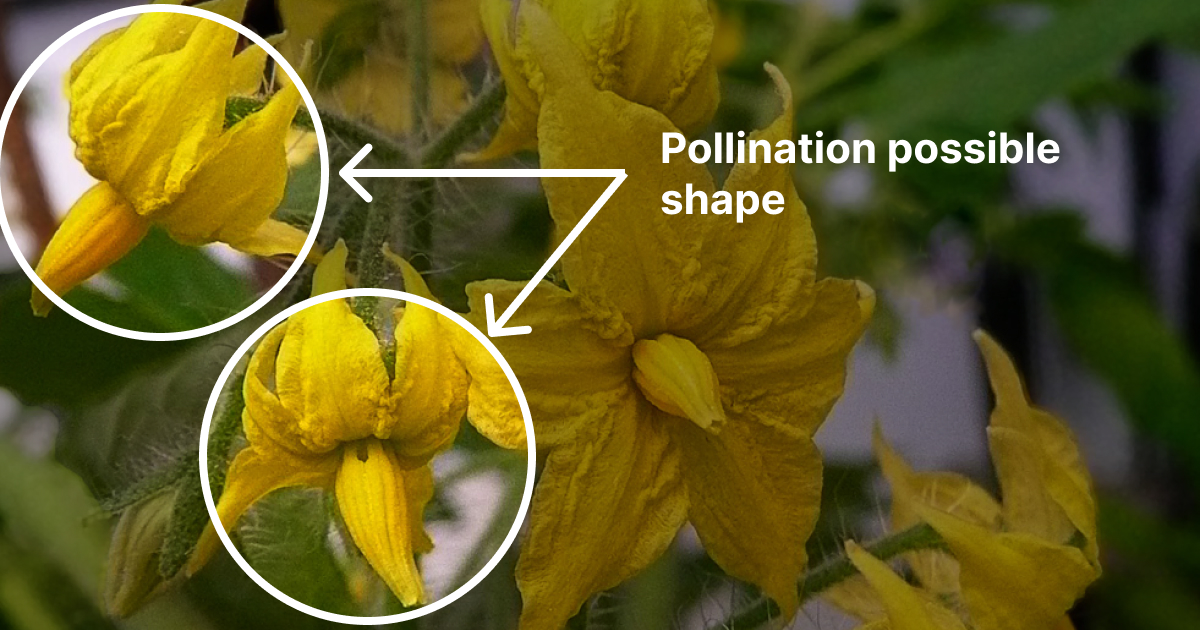
Common Pitfalls Avoided: Troubleshooting Tips for Happy, Healthy Hydroponic Tomatoes
My path wasn’t paved with only ripe rewards. Nutrient imbalances, root rot, and pesky aphids threatened my tomato haven. Deep dives into forums revealed preventive measures like regular EC and pH monitoring, optimal water temperatures, and avoiding stagnant water – a potent potion against root rot. For aphid foes, I unleashed a squad of beneficial insects, ladybugs and lacewings like tiny knights safeguarding my plants. The result? Healthy, thriving tomatoes and a newfound confidence in my ability to navigate the challenges of hydroponics.
Remember: Embrace the bumps, learn from shared experiences, and adapt your strategies. Online forums are your treasure trove of wisdom, and prevention is your magic shield. With these tips and a little troubleshooting savvy, you’ll conquer common pitfalls and watch your tomato dreams blossom into bountiful realities!
Sustainability Superhero: Eco-Friendly Perks of Hydroponic Tomatoes Growing
Swapping soil for water isn’t just about delicious tomatoes; it’s about becoming an eco-warrior! My hydroponic balcony isn’t just a garden, it’s a miniature haven for sustainable practices. Join me as we debunk myths and unleash the green superpowers of soilless gardening!
Water Conservation Warrior: Minimize Your Footprint with Efficient Hydroponics
Hydroponics uses up to 90% less water than traditional soil methods. My closed-loop system recycles every precious drop, making me feel like a water bender conjuring life from a few liters. Online forums even shared secret tips like repurposing rainwater and condensate from air conditioners – every drop counts in my verdant kingdom!
Beyond Conservation: Water isn’t the only hero here. Forget carbon-heavy fertilizers and imported produce. Growing your own tomatoes using recycled plastic buckets and homemade nutrient mixes slashes your carbon footprint. Online communities even discuss DIY LED setups powered by renewable energy, making your hydroponic oasis truly self-sufficient! With every juicy tomato, you’re giving Mother Earth a high-five.
Beyond Hydroponic Tomatoes: Explore the Potential of Hydroponic Gardening for Other Fruits and Veggies
Who says tomatoes get all the fun? Hydroponics lets you cultivate a diverse edible playground! Online forums are bursting with inspiration for ventures beyond the Tomatoverse. Imagine succulent strawberries cascading from vertical systems, leafy greens flourishing under LED lights, and even exotic herbs thriving in your kitchen. Hydroponics opens a world of possibilities, allowing you to grow anything your imagination (and climate) can conjure!